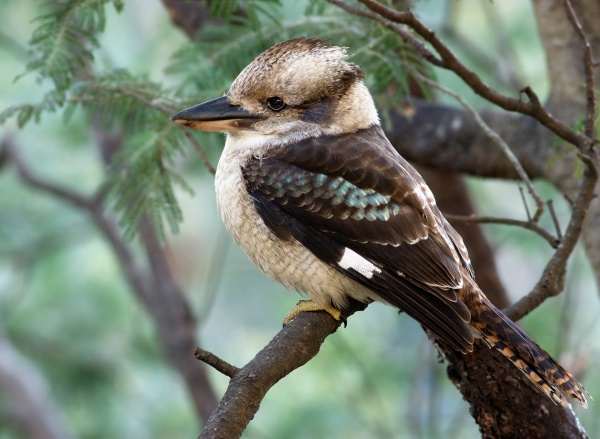Facts About Kookaburra
Kookaburras are captivating birds belonging to the genus Dacelo, native to Australia and New Guinea. Typically, they measure between 28 and 42 centimeters in length and weigh approximately 300 grams. The name "kookaburra" originates from the Wiradjuri word "guuguubarra" which imitates the bird's distinctive call. Although classified as kingfishers, kookaburras are not closely associated with water as their relatives are.
Kookaburras inhabit diverse environments, ranging from humid forests and dry savannas to suburban areas with tall trees or streams. The laughter-like call of the laughing kookaburra is frequently used in films and television shows to conjure the Australian bush or a tropical jungle ambiance.
The genus Dacelo was first described by English zoologist William Elford Leach in 1815, designating the laughing kookaburra as the primary species. There are four kookaburra species distributed across Australia, New Guinea, and the Aru Islands. Notably, male and female kookaburras of certain species exhibit distinct physical differences, demonstrating sexual dimorphism.
Kookaburras primarily consume meat, preying on small animals such as mice, snakes, insects, and even the young of other birds. They are territorial animals and frequently call in unison to assert their territory. Despite their carnivorous diet, they seldom eat fish, preferring other types of prey.
All kookaburra species are currently classified as Least Concern regarding conservation status. Australian legislation protects these native birds, including kookaburras. It is crucial not to feed them ground beef or pet food, as these can lack essential nutrients such as calcium and fiber that kookaburras require.
